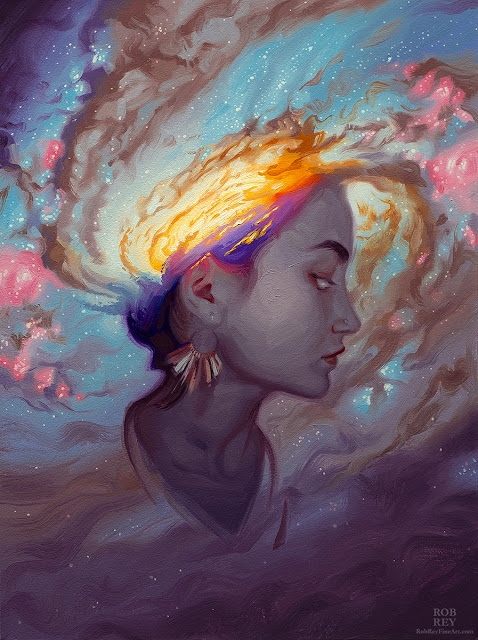We tend to think of evolution as a biological process of rising complexity that began with single-celled organisms here on earth, but the universe has been undergoing a cosmic evolution of growing complexity from the very beginning.
Before there could be cells, there needed to be complex molecules and an array of elements to make them. The earliest known events of the universe generated only a few of the lightest elements: hydrogen, helium, and trace amounts of lithium. Until the first stars formed and began fusing protons and neutrons into larger nuclei the universe was devoid of heavier elements, including the carbon, nitrogen, and oxygen of which we are made. Other processes took these elements and bonded them into basic amino acids and other molecular building blocks of life as we know it.
Biological evolution on our planet is thought to be nearly as old as the Earth, but the complexity that made it possible has been accumulating since time began.
In this painting, the thread of gas and dust that grows from the left and reaches a crescendo at the right represents the growth of complexity through time. Also featured is a developing galaxy, early massive hot blue stars fusing higher elements, a supernova explosion spreading higher elements into space, a new star and protoplanetary disk enriched with elements, and a newly formed earth-like planet in the bottom right. The figure, an allegory of rising complexity, wears a necklace featuring a carbon atom and her hairpiece is a model of a basic amino acid that has been found abundantly in outer space. These are the building blocks of life ready for biological evolution to begin!










































